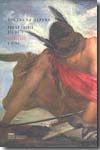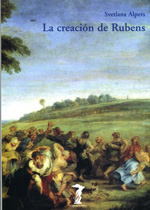The vexations of art
Velázquez and others
- ISBN: 9780300108255
- Editorial: Yale University Press
- Fecha de la edición: 2005
- Lugar de la edición: New Haven. Estados Unidos de Norteamérica
- Encuadernación: Cartoné
- Medidas: 21 cm
- Nº Pág.: 298
- Idiomas: Inglés

Velazquez is often considered as an artist apart - great, but isolated in a palace in Spain. This book is designed to set him in conjunction with certain conditions of painting at his time and after (the studio, war and peace, museums, Manet, and modern painting). Beginning in the seventeenth century and continuing well into the twentieth, roughly from Rembrandt and Vermeer to Matisse and Picasso, a succession of European painters have taken the studio as the world, which is to say, the studio is where the world, as it gets into painting, is experienced. This is unprecedented. The studio phenomenon is not prominent in earlier European art, or in other pictorial traditions. In the first part of the book, Svetlana Alpers focuses on this retreat into the confines of the studio; in the second part she looks at what she calls the 'painterly pacific', or the ways in which the paintings of Dutch masters and Velazquez acknowledge war and rivalry and also offer a way out. The final chapters give a completely new account of Velazquez's Las Hilanderas or The Spinners, a ravishing painting which has been eclipsed by the attention paid to the enigmas of Las Meninas. Alpers concentrates on the art of the seventeenth century, but also looks back and forward in time. She considers Velazquez as curator of the Spanish royal collection, which included many works by his admired predecessors, Titian and Rubens. Velazquez also resembles Manet and the affinity between the two painters is analysed. Both worked in a tradition that assumed that there were persistent pictorial problems to take up. Inventive change was encouraged. Art such as this vexes or unsettles our view of the world even as it gives us reason to pause and look. The book concludes by asking whether painting continues to do that today. This highly original, compelling and passionately engaged book reflects Alpers's close looking and long reflection upon a certain tradition of European painting. It illuminates the nature of








